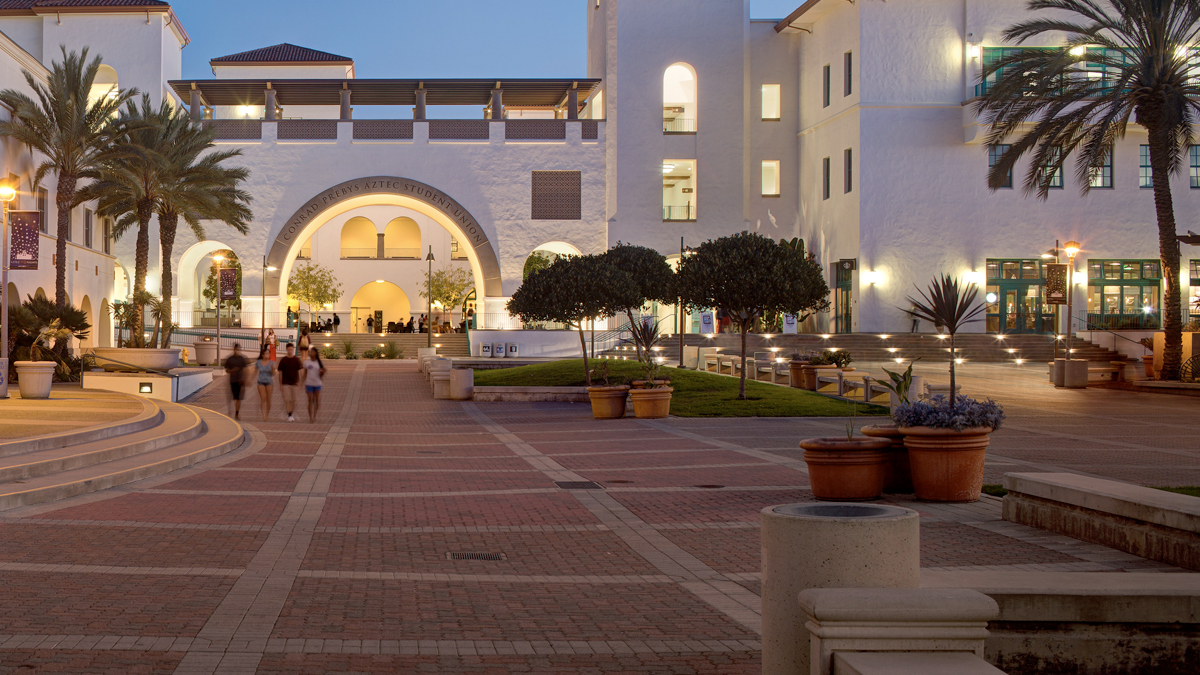The SDSU Library and Textbooks: Still Saving After All These Years

Seven years ago, the California State University system initiated efforts to reduce the cost of textbooks and other educational materials for CSU students, and these efforts continue to bear fruit. For the 2025/26 academic year, the estimated average cost of textbooks and educational materials for San Diego State University undergraduate students is $970, compared to $1,746 for the 2016/17 academic year. In a world where we hear a lot of talk about increasing costs, that's a 45% savings.
The savings are the result of careful collaboration between the library, bookstore, Instructional Technology Services (ITS), and faculty across campus.
There are three approaches to achieve the goal of lowering costs for educational materials:
- Purchasing licenses for multi-use e-books, which students use for free without any limit on how many students can use the book at any one time.
- Using Open Access materials, including journal articles and books. These materials can be freely used by our students and faculty, but their contents cannot be modified.
- Using Open Educational Resources, materials that can be freely used by our students and faculty can modify, combine and edit content to suit their particular needs.

One of the biggest changes was the 2022 introduction of the Equitable Access program (now called Day1Ready) for undergraduates and Immediate Access for graduate students. These programs provide electronic versions of textbooks and other materials for a fixed cost, reducing the cost for most students and making it easier for students and families to budget for educational costs.
Ben Compton, course materials manager at Aztec Shops, and his team work with publishers to establish deeply discounted rates for electronic versions of specific materials, usually 40-70% less than the printed textbook price. Since these are electronic versions of the course materials, they often also include extras such as the ability for students to share notes, link to additional materials, and tools for accessibility. The convenience and cost savings mean that 80% of undergraduates participate in the program.
The bookstore and the library collaborate to purchase unlimited free access to ebooks for the Day1Ready program. Since the library began this effort in 2022, it has saved students $1,443,666 in textbook costs.
Matthew Verbyla, Associate Professor of Environmental Engineering, said, “I use e-books that are available through the SDSU library or that are published as open access. This prevents students from having to spend a lot of money to purchase expensive textbooks. Plus, most of the good textbooks in my field are already available through the SDSU library - our librarians are amazing!”
The library is also integral to the use of Open Educational Resources (OER). Faculty choose ebooks, journals, case studies, data sets, videos and more as their classroom materials rather than requiring students to buy textbooks. These can be freely edited and combined, allowing faculty to create materials customized to their class. Kate Holvoet, Scholarly Communication and Open Initiatives Librarian, said, “These materials provide faculty and their students with low-cost or free alternatives to commercial products. I work with interested faculty to help them find the best possible resources for their courses. Choosing library ebooks and OER lowers the per-credit-hour cost of Day1Ready.”
“I chose an OER textbook for my class because it is important to me that money (i.e., having to buy a textbook) not be a barrier to my students' learning. I searched the MERLOT database for days when I was designing my course, looking for a textbook in the subject I teach that used the same strengths-based or asset-based approach to learning I use in my classroom--without having to write my own!” said Rebecca Tedesco, faculty in the College of Arts and Letters. She added, “Frankly, it is unlikely a textbook sold by a major publisher in the subject I teach would be written in a strengths-based paradigm instead of a deficit model, and major publishers are often best positioned to provide accessible materials to students. The particular textbook I chose is perfect because it is free, it uses a strengths-based approach to learning, and it is accessible to disabled students (and by extension for all students, based on principles of universal design for learning). That is why I still use it three years later and why, the next time I design a course, I will find an OER again.”
Although faculty and students are increasingly turning to electronic resources, some faculty still choose print textbooks or other physical materials for use in their classes (and many books are still not available in an electronic format that can be used by multiple students through the library). For these materials, the library continues to provide access to traditional “course reserves” so that students can check them out rather than purchase them.
All of these efforts, by all of these campus partners, together have saved SDSU students an amazing $28,273,628 (compared to purchasing new print materials) between 2022 and now. With the increasing use of electronic resources, the savings will continue to increase in the future.

